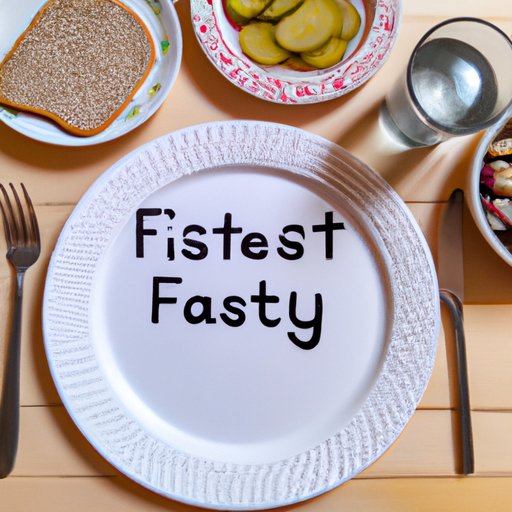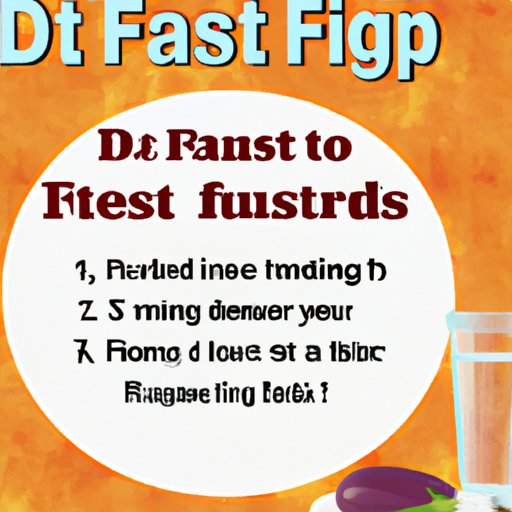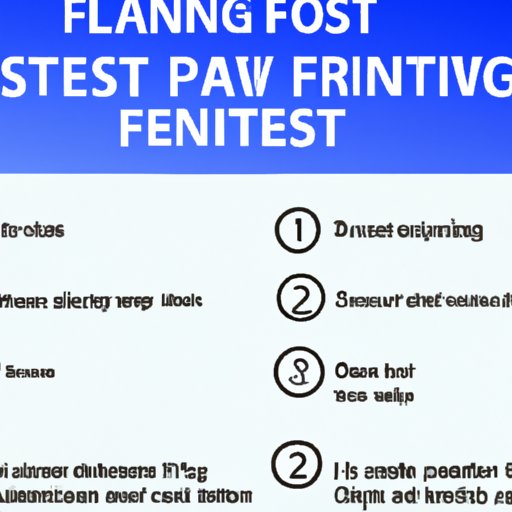Introduction
Fasting diets are gaining popularity as an effective way to lose weight, improve health, and even increase longevity. But what is a fasting diet, and how does it work? In this article, we’ll explore the definition of fasting diets, their potential benefits and risks, and provide a guide on how to start your own fasting diet, including what to eat and sample meal plans. Plus, get tips for successful fasting dieting.
Definition of Fasting Diets
A fasting diet is an eating plan that involves periods of eating and drinking very few or no calories. It’s a form of intermittent fasting, meaning there are times when you eat normally and other times when you don’t eat at all. The goal of fasting diets is to reduce your overall calorie intake and help you reach your health goals.

Overview of Benefits and Risks
Fasting diets offer many potential benefits, such as weight loss, improved metabolism, decreased inflammation, and even increased life expectancy. However, there are also some risks associated with fasting diets, such as dehydration, nutrient deficiencies, and low energy levels. Before starting any type of fasting diet, it’s important to speak with your doctor to ensure it’s safe for you.
Types of Fasting Diets
There are several different types of fasting diets, including intermittent fasting, alternate-day fasting, and prolonged fasting. Let’s take a closer look at each one:
Intermittent Fasting
Intermittent fasting is the most popular type of fasting diet. It involves alternating between periods of eating and not eating (fasting). For example, you may choose to fast for 16 hours and only eat during an 8-hour window every day. During your fasting period, you can drink water, tea, and other calorie-free beverages, but you should avoid eating anything.
Alternate-Day Fasting
With alternate-day fasting, you alternate between days of fasting and days of eating normally. On fasting days, you consume only water, tea, and other calorie-free beverages. On non-fasting days, you eat whatever you want in moderation.
Prolonged Fasting
Prolonged fasting is the most extreme type of fasting diet. It involves going without food for multiple days, typically 3-7 days. During this time, you should only drink water and calorie-free beverages. Prolonged fasting is not recommended for beginners and should only be done under the supervision of a doctor.
How to Start a Fasting Diet
Starting a fasting diet can be challenging, but there are a few steps you can take to prepare your body and set yourself up for success. Here’s how to get started:
Preparing Your Body
Before starting any type of fasting diet, it’s important to prepare your body. Start by gradually reducing your calorie intake over a few days. This will help your body adjust to the lower calorie intake and minimize the risk of side effects. Additionally, make sure to drink plenty of water throughout the day to stay hydrated.
Setting Goals
Once your body is prepared, it’s time to set your goals. Determine why you’re starting a fasting diet, and decide which type of fasting diet is right for you. Be realistic with your goals and remember that progress takes time.
Choosing the Right Fasting Diet for You
Once you’ve set your goals, it’s time to choose the right fasting diet for you. If you’re a beginner, intermittent fasting is a great place to start. If you’re more experienced, you may want to try alternate-day fasting or prolonged fasting. Make sure to speak with your doctor before starting any type of fasting diet.

What to Eat During a Fasting Diet
During a fasting diet, it’s important to make healthy food choices. Here’s what to eat and what to avoid:
Foods to Avoid
During your fasting period, you should avoid eating any food. This includes processed foods, sugary snacks, and high-calorie beverages. It’s also important to limit alcohol consumption, as it can lead to dehydration and interfere with your progress.
Foods to Include
On non-fasting days, focus on eating whole, unprocessed foods. This includes fruits, vegetables, lean proteins, whole grains, and healthy fats. Additionally, make sure to drink plenty of water throughout the day to stay hydrated.
Sample Meal Plans for Fasting Diets
Creating a meal plan can help you stay on track with your fasting diet. Here are some sample meal plans for the three types of fasting diets:
Intermittent Fasting Meal Plan
Breakfast: Oatmeal with fresh fruit
Lunch: Salad with grilled chicken
Dinner: Vegetable stir-fry
Snacks (if needed): Nuts, seeds, hard-boiled eggs, Greek yogurt
Alternate-Day Fasting Meal Plan
Fast Days: Water, tea, and other calorie-free beverages
Non-Fast Days: Breakfast: Smoothie with oats, banana, and almond milk
Lunch: Soup and salad
Dinner: Baked salmon with roasted vegetables
Snacks (if needed): Hummus and vegetables, nut butter and apples
Prolonged Fasting Meal Plan
Days 1-3: Water, tea, and other calorie-free beverages
Days 4-7: Breakfast: Smoothie with avocado, banana, and almond milk
Lunch: Soup and salad
Dinner: Baked fish with steamed vegetables
Snacks (if needed): Hard-boiled eggs, nuts, seeds, and Greek yogurt

Tips for Successful Fasting Dieting
In addition to following a meal plan, here are some tips to help you have a successful fasting dieting experience:
Proper Hydration
Hydration is key when it comes to fasting diets. Make sure to drink plenty of water throughout the day to stay hydrated. Additionally, avoid drinking too much caffeine, as it can lead to dehydration and interfere with your progress.
Exercise
Exercise can help support your fasting diet by increasing your metabolism and burning more calories. Aim for at least 30 minutes of physical activity per day, such as walking, jogging, or cycling.
Sleep
Getting enough sleep is essential for successful fasting dieting. Aim for 7-9 hours of quality sleep per night to ensure your body has enough time to rest and recover.
Conclusion
Fasting diets offer many potential benefits, such as weight loss, improved metabolism, decreased inflammation, and even increased life expectancy. However, there are also some risks associated with fasting diets, so it’s important to speak with your doctor before starting one. There are several types of fasting diets, including intermittent fasting, alternate-day fasting, and prolonged fasting. To have a successful fasting diet experience, make sure to prepare your body, set goals, create a meal plan, stay hydrated, exercise, and get enough sleep.
(Note: Is this article not meeting your expectations? Do you have knowledge or insights to share? Unlock new opportunities and expand your reach by joining our authors team. Click Registration to join us and share your expertise with our readers.)
